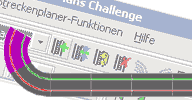

This reduction includes particulates, which are sometimes a problem for gasoline engines with direct injection. New intake ports promote more tumbling of the mixture to improve combustion efficiency and reduce raw emissions from the engine. Coupled with 3625 psi of injection pressure-more than twice the previous maximum-the new injector location results in finer atomization, better mixing of fuel and air, and less wall wetting. One key change is the relocation of the direct fuel injector from the side of the cylinder head, spraying across the combustion chamber, to the top, adjacent to the spark plug, where the fuel is sprayed straight down. The intake manifold, however, is simpler than in the previous engine with none of the variable plenum volumes and port lengths. Both intake and exhaust cams have phasing that is adjustable over a 50-degree range, and intake-valve timing is similar to the previous naturally aspirated engine’s while the exhaust timing has been adjusted to optimize turbocharger performance. The valvetrain uses Porsche’s VarioCam Plus, with selectable concentric valve lifters to achieve variable valve timing and lift on the intake cams. The cylinder heads also are similar to their predecessors, although with smaller intake and exhaust valves to fit the smaller bores. These are essentially the same size in the new engines as in the old, and they required the same amount of space. The limiting factor is the length of the crankshaft, which has six crank throws and seven main bearings.

The exhausts are similarly downsized, going from 43.2 and 36.1 mm to 29.7 mm on the new engine.ĭespite the narrower bore, the bore-center spacing remains at 118.0 mm-common to all of the water-cooled boxer engines. The smaller bore has less room for valves, so the intake valves on both the new engines measure 34.3 mm in diameter, down from 39.5 mm on the previous Carrera and 41.8 mm on the Carrera S. The less oversquare dimensions make for a more compact combustion chamber for greater efficiency while the very similar stroke dimension accommodates high revs. The stroke is only reduced by 1.1 mm, while the bore dimensions came down by 6.0 and 11.0 mm for the two engines. This is down from 3436 cc and 3800 cc in the 991.1 Carrera and Carrera S models. Thanks to a bore and stroke of 91.0 mm and 76.4 mm, the new engine displaces 2981 cc. In the fashion of modern turbo engines, these powerplants for the 991.2-as these new 911s are called-are downsized, but not by too much. A simplified oil pump with variable displacement to reduce its power requirements saves another 2.5 pounds, while a new plastic sump saves 4.5 more. The resulting block has a closed deck and slices 3.3 pounds from the engine’s weight. It’s a fairly common alloy used in cylinder heads called AlSi7MgCu0.5 and it’s cast with metal outer molds and sand-cast cores, using a rotary process that reduces porosity. Moreover, this change allowed Porsche to employ a stronger aluminum alloy for the block. The 2017 Porsche 911 Carrera S coupe and 911 Carrera cabriolet. According to Thomas Brandl, one of the engineers working on the new engine, this RSW (Rotating Single Wire) process is more durable than either Nikasil or the silicon-reinforced Locasil process used previously. The raw aluminum cylinders are machined with slightly undercut grooves, so that the 150-micron-thick (0.006 inch) iron coating interlocks mechanically with the aluminum. However, these cylinder bores are now coated with iron that is plasma-sprayed onto the aluminum surface. The engine block still consists of two parts, each with a crankcase half and a block of three cylinders. The new engines, known internally as 9A2, are complete redesigns of the existing 9A1 powerplants, although they retain the traditional flat-six layout and general dimensions of their predecessors.
#Carrera streckenplaner v.1.0.2 drivers
But Porsche also understood that while achieving the efficiency improvements demanded by the politicians of the world, it also needed to create a turbocharged engine that perpetuated the stirring sounds and high-rpm energy that 911 drivers expect. The motivation behind this change is improved fuel efficiency to meet both European and American requirements for reduced CO2 emissions. That’s because with this major midcycle update, Porsche has turbocharged the engines in even the lowest 911s and is heading toward a near-universal turbo future, following the successful trail blazed by Audi, BMW, and Mercedes-Benz. With the introduction of the 2017 911 Carrera and Carrera S, the word “turbo” as it relates to Porsche’s iconic sports car has been relegated to a mere badge rather than being singularly emblematic of one of the hottest versions.


 0 kommentar(er)
0 kommentar(er)
